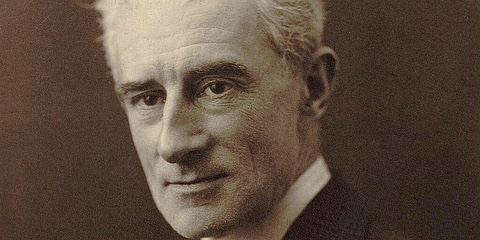MCO’s Poets + Fighters can be heard on Sunday 29 September 2:00pm at Kingston Arts Centre – Moorabbin, Friday 3 November 7:30pm at The Twyford – Merimbula and Saturday 4 November 2:30pm at Mallacoota Golf Club – Mallacoota.
Samuel Barber (1910–1981)
Dover Beach
Samuel Barber (1910-1981) was one of the most celebrated American composers of his time. Barbara Heyman in Grove Online said, “Barber pursued, throughout his career, a path marked by a vocally inspired lyricism and a commitment to the tonal language and many of the forms of late 19th-century music”. He composed across many genres with around two-thirds of his works for voice.
Dover Beach Op 3 is written for low voice and string quartet. It is a setting of the English poet and critic Matthew Arnold’s (1822–88) “Dover Beach” written around 1850 about the English port of Dover. The work was composed when Barber was a twenty-one year old student at the Curtis Institute of Music in Philadelphia. This is the first of his extended works for voice and strings. The setting conveys the pessimism, melancholy, and sense of loss found in the text.
Richard Meale (1932–2009)
Cantilena Pacifica
Richard Meale (1932–2009) studied piano, history and theory at the NSW State Conservatorium of Music, but never studied composition — he was self-taught. In 1960, he was awarded a Ford Foundation Grant which he used to undertake studies in non-Western music at the University of California in Los Angeles, and other American universities, where he concentrated on Japanese court music and Javanese and Balinese gamelan. He was a prominent pianist who premiered works by among others Pierre Boulez, Karlheinz Stockhausen, and Olivier Messiaen. In 1964, he conducted the Australian premiere of Arnold Schoenberg’s Pierrot lunaire. He taught composition at the University of Adelaide.
Cantilena Pacifica is the fifth movement from Meale’s String Quartet No 2 composed in 1980. It was first performed by the Petra Quartet in Adelaide in March 1980. In a radio interview around this time Meale said he was intent on, “reclaiming known objects: major and minor chords, octaves”. Michael Hannan, in his exhaustive volume The Music of Richard Meale, said, “the bold simplicity of the texture, harmony and melodic design … of ‘Cantelina Pacifica’ represents a watershed in Meale’s career preparing the way for the musical language of his first opera Voss (1985), the next work he composed”.
Carl Vine (b 1954)
Poets + Fighters
Carl Vine (b 1954) is a distinguished Australian composer, pianist, teacher and artistic director. His extensive catalogue of compositions includes eight symphonies and thirteen concertos, chamber music, music for solo piano, and music for dance, theatre and film. Poets & Fighters for low voice and string quartet was composed between July 2015 and May 2016 on a commission from Katie Noonan.
The composer writes: Australian singer-songwriter Katie Noonan came up with the brilliant idea of commissioning, from a number of very diverse Australian composers, a collection of settings of Judith Wright’s extraordinary poetry, for herself to sing with the Brodsky Quartet. I was fortunate to be one of her selection. For this setting, Poets & Fighters, I chose ‘The Slope’ from Judith’s Alive poetry collection of 1973, for the power of its poetic imagery as well as for its expansive humanitarian message. The only function of the musical setting is to pay homage to her marvellous words.
Maurice Ravel (1875–1937)
String Quartet in F major
I. Allegro moderato
II. Assez vif, très rythmé
III. Très lent
IV. Vif et agité
The French composer Maurice Ravel (1875-1937) composed predominantly for the orchestra and piano. He also wrote two piano concertos, two operas, ballet music, and eight song cycles. In addition, he composed a small number of chamber works including the Introduction and Allegro for harp, flute, clarinet and string quartet, a piano trio, a violin sonata, a duo for violin and cello, and a string quartet. He was a great arranger and orchestrator of piano music, including his 1922 version of Mussorgsky’s Pictures at an Exhibition.
The String Quartet in F major was composed in 1902–03 and premiered by the Heymann Quartet in Paris in March 1904. It is dedicated to the composer and teacher, Gabriel Fauré. This was written ten years after Debussy had composed his String Quartet in G minor and there are similarities between the two – textures, colours, harmonies and the use of cyclic design with recurring themes.
The work is in four movements. The opening Allegro moderato – Très doux (very sweet) is in sonata form with the presentation of the main themes that recur through the work. There is a wonderful sense of lyricism through the movement. The short Assez vif (rather lively) is marked by the shifts between pizzicato and the lyrical folk-like contrasting theme with massive dynamic shifts. Très lent (very slow) is a beautiful nocturne providing a slow and contemplative contrast to vitality of the previous movement. The finale, Vif et agité (lively and agitated) is structured as a rondo and provides a wildly agitated conclusion to the work with reference to the earlier themes, energy and vitality.
Notes: David Forrest

